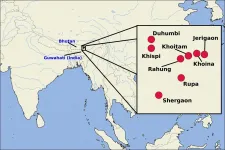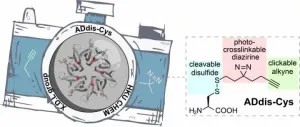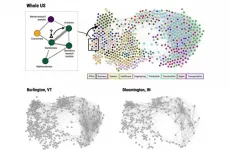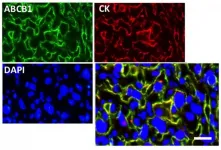(Press-News.org) For a long time, historical linguists have been using the comparative method to reconstruct earlier states of languages that are not attested in written sources. The method consists of the detailed comparison of words in the related descendant languages and allows linguists to infer the ancient pronunciation of words which were never recorded in any form in great detail. That the method can also be used to infer how an undocumented word in a certain language would sound, provided that at least some information on that language, as well as information on related languages is available, has been known for a long time, but so far never explicitly tested.
Two researchers from SOAS University of London and the Max Planck Institute for the Science of Human History have recently published a paper in the renowned international journal for historical linguistics, Diachronica. In the article, they describe the results of an experiment in which they applied the traditional comparative method to explicitly predict the pronunciation of words in eight Western Kho-Bwa linguistic varieties spoken in India. Belonging to the Trans-Himalayan family (also known as Sino-Tibetan and Tibeto-Burman language family), these varieties have not yet been described in much detail and many words had not yet been documented in field work. The scholars started their experiment with an existing etymological dataset of Western Kho-Bwa varieties that was collected during fieldwork in the Indian state of Arunachal Pradesh between 2012 and 2017. Within the dataset, the authors observed multiple gaps in which the word forms for certain concepts were missing.
"When conducting fieldwork, it is inevitable that you miss out on some words. It's kind of annoying when you observe that afterwards, but in this case, we realized that this was the perfect opportunity to test how well the methods for linguistic reconstruction actually work," says Tim Bodt, first author of the study.
The researchers set up a computer-assisted workflow to predict the missing word forms. The classical methods are traditionally applied manually, but the new computational solutions helped the scholars to increase the efficiency and reliability of the process, and all results were later manually checked and refined. To increase the transparency and validity of the experiment, they then registered their predictions online.
"Registration is incredibly important in many scientific fields because it ensures that researchers adhere to good scientific practice, but as far as we know it has never been done in historical linguistics," says Johann-Mattis List, who carried out the computational analyses of the study.
"By registering our predictions online, we made sure we could no longer modify our predictions in light of the results we obtained during our subsequent verification process," Bodt, adds.
With predictions in hand, Bodt then traveled to India to verify the predicted words with native speakers of the Western Kho-Bwa languages. After asking the participating local language consultants to provide their words for the concepts under investigation, the authors compared these attested words with their earlier predictions. Based on the proportion of correctly predicted sounds per word form, the predictions were correct in 76% of all cases, which is remarkable given the limited amount of information that was used to predict the word forms. Moreover, the scholars were able to identify several reasons why certain predictions did not match the actual attested forms in the languages.
"The more we know about a language family in general, the better we can predict unknown word forms. This is all possible, because languages change their sound systems in a surprisingly regular manner," says List. "Despite the fact that so little was known about the Western Kho-Bwa languages and their linguistic history, we were able to show through our experiment that regular sound changes result in predictable word forms. In turn, our experiment has greatly improved our understanding of the Western Kho-Bwa languages and their linguistic history."
Apart from giving a concrete example for the power of the methodology of historical linguistics and the value of their experiment for linguistic studies, the authors identify certain additional benefits of predicting words in linguistic research.
"Predicting words increases the transparency and efficiency of our research and our fieldwork. This is crucial in light of rapid language loss and limited funding for descriptive linguistic work. Moreover, it also has an educational aspect since it encourages speakers to reflect on their own linguistic heritage," says Bodt.
The researchers hope that the results of their ground-breaking experiment will encourage other linguistic field workers, descriptive linguists, and historical linguists to follow suit, and make more explicit and conscious use of the regularity of sound change and predictions of word forms.
INFORMATION:
Scientific studies rarely focus on long non-coding RNA molecules (lncRNAs), even though they potentially regulate several diseases. The role of several lncRNAs in anti-viral inflammatory response regulation has recently been reported. Considering their significant regulatory function in immune response, researchers from the Azrieli Faculty of Medicine of Bar-Ilan University sought to identify lncRNAs co-expressed with human genes involved in immune-related processes during severe SARS-CoV-2 infection in the lungs.
Recent studies demonstrated that ...
Chemotherapy is a drug treatment that uses powerful chemicals to kill fast-growing cancer cells in the body. It is a systemic treatment where drugs travel throughout the body and destroy cancer cells that have spread (metastasized) to parts of the body far away from the original (primary) tumour. As such, chemotherapy remains the main treatment against various cancers. Thus, when cancer cells resist chemotherapeutic drugs, treatment failure results.
The resistance of cancer cells to chemotherapy is marked by changes and increased output of certain proteins. These altered proteins can help doctors to identify patients who will not respond well to chemotherapy and paves the way for the development of therapeutic intervention to "re-sensitise" their cancer cells to treatment.
In a Nature ...
COLUMBUS, Ohio - A new treatment is among the first known to reduce the severity of acute respiratory distress syndrome caused by the flu in animals, according to a new study.
Tests in mice infected with high doses of influenza showed that the treatment could improve lung function in very sick mice and prevent progression of disease in mice that were pre-emptively treated after being exposed to the flu.
The hope is that it may also help humans infected with the flu, and potentially other causes of acute respiratory distress syndrome (ARDS) such as SARS-CoV-2 infection.
Specific cells in mice are less able to ...
An international collaboration of astronomers led by a researcher from the Astrobiology Center and Queen's University Belfast, and including researchers from Trinity College Dublin, has detected a new chemical signature in the atmosphere of an extrasolar planet (a planet that orbits a star other than our Sun).
The hydroxyl radical (OH) was found on the dayside of the exoplanet WASP-33b. This planet is a so-called 'ultra-hot Jupiter', a gas-giant planet orbiting its host star much closer than Mercury orbits the Sun and therefore reaching atmospheric temperatures of more than 2,500° C (hot enough to melt most metals).
The lead researcher based at the Astrobiology Center and Queen's University Belfast, ...
A research group led by Professor Xiang David LI from the Research Division for Chemistry and the Department of Chemistry, The University of Hong Kong, has developed a novel chemical tool for elucidating protein interaction networks in cells. This tool not only facilitates the identification of a protein's interacting partners in the complex cellular context, but also simultaneously allows the 'visualisation' of these protein-protein interactions. The findings were recently published in the prestigious scientific journal Molecular Cell.
In the human body, proteins interact with each other to cooperatively regulate essentially every biological process ranging from gene expression and signal transduction, to immune response. As a result, dysregulated ...
The researchers in this study reached this conclusion by drawing on network modelling research and mapped the job landscapes in cities across the United States during economic crises.
Knowing and understanding which factors contribute to the health of job markets is interesting as it can help promote faster recovery after a crisis, such as a major economic recession or the current COVID pandemic. Traditional studies perceive the worker as someone linked to a specific job in a sector. However, in the real-world professionals often end up working in other sectors that require similar skills. In this sense, researchers consider job markets as being something similar to ecosystems, where organisms are linked in a complex network of interactions.
In this context, an effective job market depends ...
During the Bronze Age, Mesopotamia was witness to several climate crises. In the long run, these crises prompted the development of stable forms of State and therefore elicited cooperation between political elites and non-elites. This is the main finding of a study published in the journal PNAS and authored by two scholars from the University of Bologna (Italy) and Eberhard Karls Universität Tübingen (Germany).
This study investigated the impact of climate shocks in Mesopotamia between 3100 and 1750 bC. The two scholars looked at these issues through the lenses of economics and adopted a game-theory approach. They applied this approach ...
A new paper on college science classes taught remotely points to teaching methods that enhance student communication and collaboration, offering a framework for enriching online instruction as the coronavirus pandemic continues to limit in-person courses.
"These varied exercises allow students to engage, team up, get outside, do important lab work, and carry out group investigations and presentations under extraordinarily challenging circumstances--and from all over the world," explains Erin Morrison, a professor in Liberal Studies at New York University and the lead author of the paper, which appears in the Journal of Microbiology & Biology Education. "The active-learning toolbox can be effectively used from ...
The placenta forms the interface between the maternal and foetal circulatory systems. As well as ensuring essential nutrients, endocrine and immunological signals get through to the foetus to support its development and growth, the placenta must also protect it from the accumulation of potentially toxic compounds. A study from Cécile Demarez, Mariana Astiz and colleagues at the University of Lübeck in Germany now reveals that the activity of a crucial placental gatekeeper in mice is regulated by the circadian clock, changing during the day-night cycle. The study, which has implications for the timing of maternal drug regimens, is published in the journal Development.
The circadian clock translates time-of-day information into physiological signals through rhythmic regulation ...
The combined effect of rapid ocean warming and the practice of targeting big fish is affecting the viability of wild populations and global fish stock says new research by the University of Melbourne and the University of Tasmania.
Unlike earlier studies that traditionally considered fishing and climate in isolation, the research found that ocean warming and fishing combined to impact on fish recruitment, and that this took four generations to manifest.
"We found a strong decline in recruitment (the process of getting new young fish into a population) in all populations that had been exposed to warming, and this effect was highest where all the largest individuals ...






